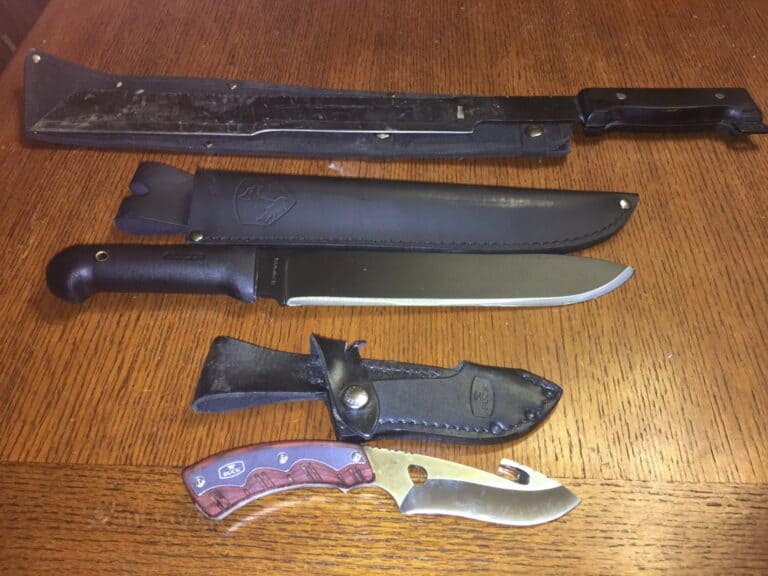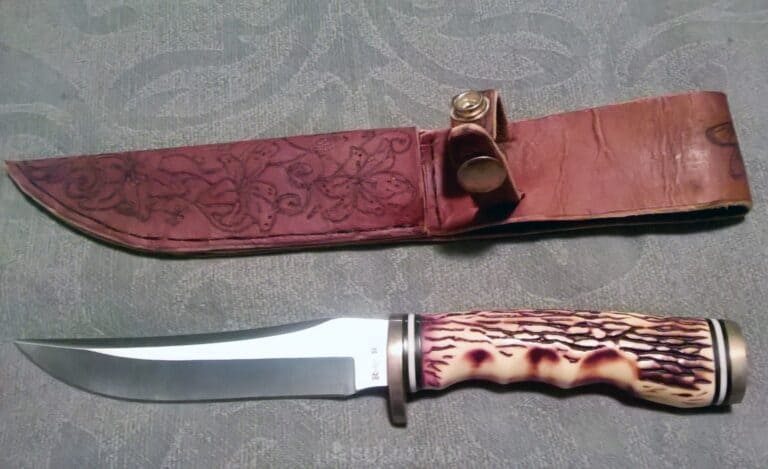A good knife is one of the most important purchases that any prepper will make for their survival kit. The knife is one of the most versatile and elemental of tools, and will be used for all kinds of tasks in all kinds of situations.

But most of us have much more to buy than just a knife, and with knife prices running the gamut from $20 or less to well north of several hundred dollars, it is difficult to choose based on your priorities.
Should you buy a cheap knife or an expensive knife?
There is no straight answer, but try to buy the best knife that you can reasonably afford, from a good brand with reputation.
High quality knives are made from better steel, enjoy considerably better quality control, and are generally more dependable in a hard use situation. When lives are on the line, quality tools are typically good insurance, knives included.
But, as always, context is everything, and though it is bad to spend too little on a knife depending on your needs it is also bad to spend too much.
Shelling out entirely too much on a bespoke knife when a more plebeian example could do everything you need it to do is wasteful from a practical perspective.
In the rest of this article we will be sharing with you a few considerations to keep in mind the next time you are shopping for your go-to knife.
You Usually Get What You Pay For
As with most things, you usually get what you pay for when it comes to knives, at least up to a certain price point.
Contrary to the assertions of the penny miser, there is a price point at which real quality becomes impossible.
You can buy too cheaply any type of tool, and find that your new tool is completely inadequate for the purpose that you bought it for the first place. If that purpose is “help you survive a nasty situation” your disappointment might prove fatal.

That being said, bumper sticker platitudes and fortune cookie wisdom only go so far when considering all the many variables that factor into this calculus of good enough when it comes to choosing a knife for survival purposes. Additionally budget is always a factor.
While it is true that you can simply save your money until you can afford a tool of adequate quality, depending upon your income, expenses, family situation and more you might find it difficult to justify the purchase of an expensive emergency tool that you will hopefully never need.
Hopefully after considering the factors below you’ll be in a better position to assess your own completely unique needs and purchase according.
Durability is a Prime Factor
The durability of any tool, but especially a tool that is to be used in extremis, is of paramount importance. Your outcome, good or bad, might depend on the ability of your tool to withstand harsh use, even abuse, and keep on working.
For a survival knife, this might entail processing wood via batoning, or even standing up to repeated impacts from misses when it is lashed to a branch to be wielded as a spear.
It is worth considering that more expensive knives made from high-performance steels and crafted by manufacturers who possess a reputation for meticulous quality and inspection is likely going to assure a higher degree of durability than a cheaper look-alike you found at the flea market or truck stop.
What Kind of Performance is Required?
We will not delve into the deep and complex world of knife steels, grinds and bevels in this article because all of those topics could take up several articles all by themselves. But it is worth identifying upfront what performance characteristics you need from your knife.
Some steels will take a shaving-quality edge, while others are better at keeping a less-sharp edge for a long time. Some steels combined with certain grinds can do both, but they are typically extremely expensive.
Certain steels are highly resistant to corrosion, reducing or even entirely eliminating worry over rust and degradation in a field situation, where others will require more or less constant care, especially in bad weather.
These quirks, perks and flaws will all have to be accounted for, and depending on your requirements or even just your wants they might influence what kind of knife you want.
If you are a neophyte when it comes to preserving, maintaining and sharpening a knife, you might be best served spending a little more to get a design that uses a high-performance, well-rounded steel that is more forgiving of neglect or mistreatment.
A seasoned aficionado of the blade will on the other hand have little difficulty keeping a knife made from high carbon steel both sharp and free of rust in field conditions.
Both users should honestly assess their needs against their own capabilities and in doing so choose accordingly.
There is no “best”, only trade-offs; sometimes cost is one of those trade-offs one way or the other.
Consider the Tool as it Is
But before you spend too much on a designer brand knife or even a one-off bespoke blade made just for you by a skilled craftsman, ask “what is a knife?”
It’s not a trick question: a knife is sublime simplicity that you can hold in your hand, being nothing more than a piece of steel with a sharpened edge and usually a point, and featuring a handle or you can safely and securely grip. That’s it.
To say that a modern “cheapy” knife somehow cannot perform the traditional tasks required of a knife, even perhaps do so with flying colors, is totally dishonest.
A knife might lack refinement, might not have been designed by a high-profile celebrity maker, or be badged with the latest and greatest manufacturer beloved of the Instagram cohort, or even be made from the “right” steel, but it could do the job and do it well for you.
Figuring out which affordable knives are up to the task and which ones aren’t might simply be a matter of doing your research on the internet for taking the initiative and doing preliminary testing yourself.
Performance speaks. Nothing else matters. If you have a cheap Uncle Henry hunting knife that you have put through thick and thin with no issues, who is to say you are wrong just because that knife was $20 at a sporting goods store, and not some $400 designer toothpick?
Consider the Impact of Loss, Theft or Breakage
It stands to reason that any tool you’re going to put to use could eventually be broken, lost or stolen. Knives of all kinds but especially pocket knives are especially vulnerable to loss and theft. That’s just the way it is.
If you are of the mindset that any tool you have is part of a “system” you have to assess the replacement cost of the knife in order to get your “system” running again.
This is far beyond a mere emotional manner for most people. Purchasing a $300 knife is one thing.
Losing it or breaking it is another, as is facing having to pony up another $300 in order to replace it with an identical item.
Compare and contrast the same situation with the loss of a $40, $50 or even $100 knife; for the vast majority of us any of those are a much easier pill to swallow, even if it is a bitter one.
Losing an heirloom-quality or one-of-a-kind knife is going to be heartbreaking, and expensive if you want another one!
Final Verdict
Some people like expensive, high-quality knives, while others prefer less expensive knives that they don’t have to worry over losing or breaking.
The truth is that there is room for both approaches for most preppers, and the only way to decide which one is right for you is by carefully assessing your requirements and weighing them against your budget.
It is equally true that you can spend to little on a knife, as well as too much.

Tom Marlowe practically grew up with a gun in his hand, and has held all kinds of jobs in the gun industry: range safety, sales, instruction and consulting, Tom has the experience to help civilian shooters figure out what will work best for them.

I usually buy mid-priced knives. I’m not gonna buy a $9.99 knife and I’m not gonna buy a $75.00+ knife either. My last two knives I bought was a BPS Kephart knife for $25.00 and Condor Bushlore for $40.00.
The BPS is for my GHB and the Condor was for my BOB. My EDC knife is a Kershaw OSO Sweet. All 3 are good knives, easy to sharpen, hold an edge and do the job I need them to do.
Overall, a very good article.
Did you just discover a Thesaurus?
(plebeian, platitudes, neophyte, aficionado & sublime simplicity)
Thanks for the smile, but really, who talks like that in the prepper world?